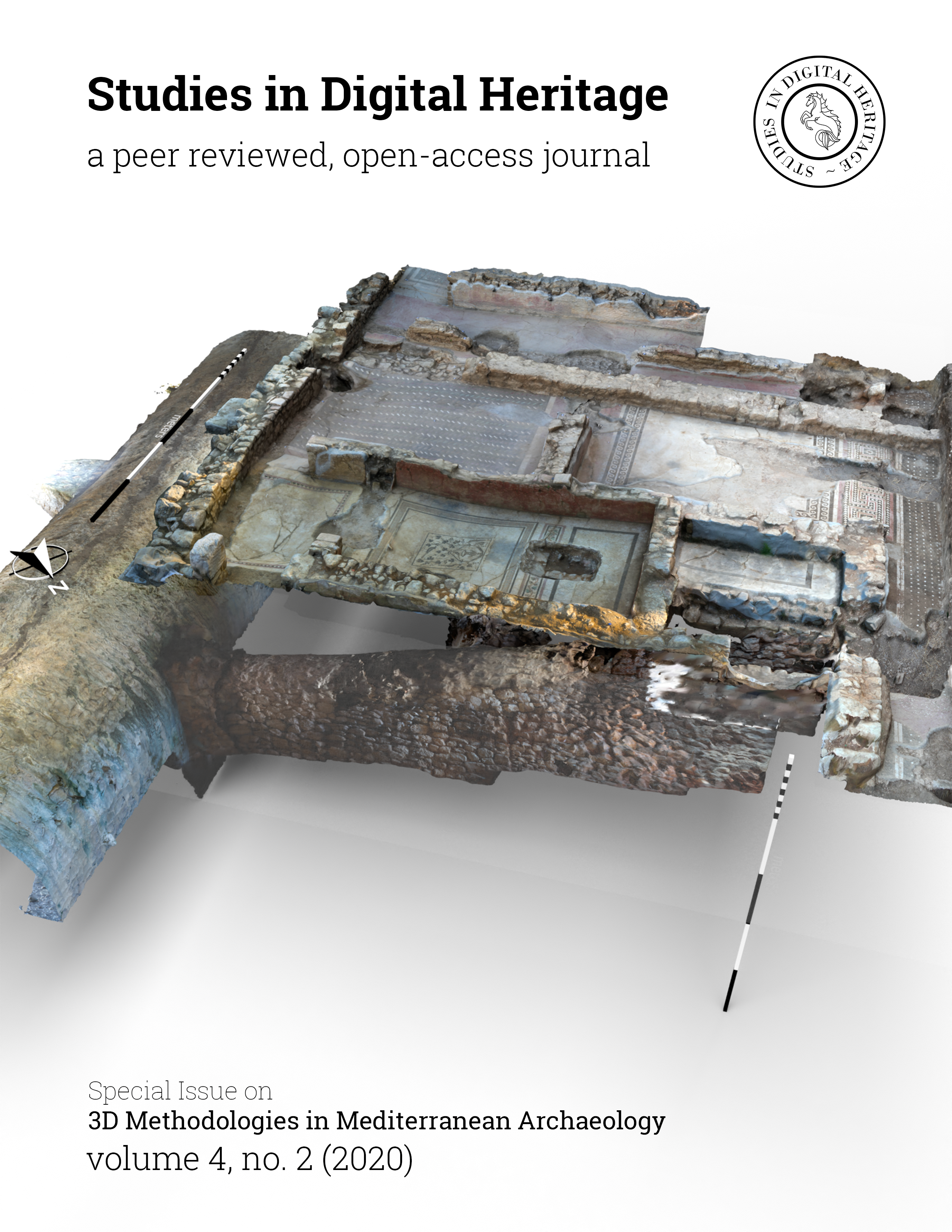Introduction to the Special Issue on 3D Methodologies in Mediterranean Archaeology
Main Article Content
Abstract
This issue brings together several papers originally presented at the 2019 annual meeting of the Archaeological Institute of America in a panel entitled, “Three-Dimensional Archaeology Comes of Age.” This collection takes stock of a decade’s worth of groundbreaking transformation in archaeological practices with a focus on the ancient Mediterranean. Over this time, a subtle transition has occurred in which contentious debates over the value and practicality of 3D tools, such as photogrammetry, 3D scanning, 3D reconstruction, and virtual reality (VR), have given way to an emergent consensus that these constitute a new and important class of recording and heuristic instruments. Rather than seek to cover this fundamental shift in a comprehensive matter, this issue presents a characteristic cross-section of current archaeological research-based on three-dimensional computational methodologies. The content cuts across some 3,000 years of Mediterranean archaeology, from the Aegean Bronze Age to the later Roman Empire, underlining the discipline-wide impact of this methodological revolution. It seeks to shed light on how digital tools are transforming not just the ways we record data, but the very questions archaeologists ask of this information and how this will shape methodological and analytical trends in the next decade and beyond.
Downloads
Article Details

This work is licensed under a Creative Commons Attribution-NonCommercial 4.0 International License.
From 18 May 2018, the contents of Studies in Digital Heritage are licensed under a Creative Commons Attribution-NonCommercial 4.0 International License (CC BY-NC 4.0). Our submitting authors pay no fee and retain the copyright to their own work.
How this works: to submit their work to the journal, authors grant Studies in Digital Heritage a nonexclusive license to distribute the work according to a CC BY-NC 4.0 license. Once an article is published, anyone is free to share and adapt its contents—provided only that they do so for noncommercial purposes and properly attribute the shared or adapted information. Details of these terms can be found on the Creative Commons website.
Download SDH’s full author agreement here
Studies in Digital Heritage will insert the following note at the end of any work published in the journal:
© [Year] by the authors. This article is an open-access article distributed under the terms and conditions of the Creative Commons Attribution License CC BY-NC 4.0 (https://creativecommons.org/licenses/by-nc/4.0/).
References
Erin Walcek Averett, Jody Gordon, and Derek Counts, eds. Mobilizing the Past: Recent Approaches to Archaeological Fieldwork in a Digital Age. Grand Forks: The Digital Press at the University of North Dakota.
Stefano Campana. 2014. 3D Modeling in Archaeology and Cultural Heritage–Theory and Best Practice. In Fabio Remondino and Stefano Campana, eds. 3D Recording and Modelling in Archaeology and Cultural Heritage. Oxford: BAR International Series 2598, 7-12
Kevin Garstki. 2020. Digital Innovations in European Archaeology. Elements in the Archaeology of Europe. Cambridge: Cambridge University Press. https://doi.org/10.1017/9781108881425
Charles W. Koenig, Mark D. Willis, Stephen L. Black. 2017. Beyond the Square Hole: Application of Structure from Motion Photogrammetry to Archaeological Excavation. Advances in Archaeological Practice 5, 1 (2017), 54–70. https://doi.org/10.1017/aap.2016.8
Giacomo Landeschi. 2019. Rethinking GIS, three-dimensionality and space perception in archaeology. World Archaeology 51,1 (2019), 17-32. https://doi.org/10.1080/00438243.2018.1463171
Brandon R. Olson and William R. Caraher eds. 2015. Visions of Substance: 3D Imaging in Mediterranean Archaeology. Grand Forks: The Digital Press at the University of North Dakota.
Christopher H. Roosevelt, Peter Cobb, Emanuel Moss, Brandon R. Olson, and Sinan Ünlüsoy. 2015. Excavation is Destruction Digitization: Advances in Archaeological Practice. Journal of Field Archaeology 40 (2015), 325–346. http://dx.doi.org/10.1179/2042458215Y.0000000004


